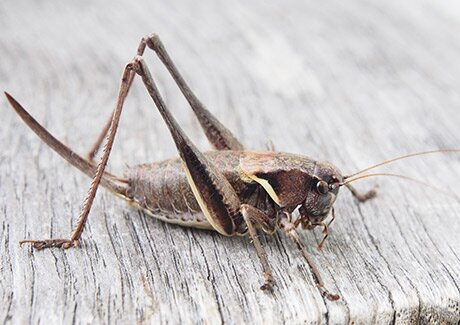Antwerp toxicologists test for levels of hazardous organic chemicals
The range of food products containing edible insects is growing steadily. Like any other food product, they need to be checked for their levels of hazardous organic chemicals. Researchers at UAntwerp put them to the test.

As the world's population grows, our planet comes under increasing pressure to provide food for so many mouths. Traditional food sources often have negative climate impacts: for instance, today's large-scale cattle farming causes huge CO2 and methane emissions. Several alternatives have been developed and promoted in recent years, including edible insects. Food products containing locusts, beetles, and other insects are now available in Belgian stores.
Edible insects are a sustainable alternative to conventional sources of animal protein. Insects have a high nutritional value, generate low greenhouse gas emissions, and are much more efficient to breed and process compared to traditional livestock farming. Many countries have a long-standing tradition of insect consumption, but in the Western world, there is still some aversion to be overcome.
Chemical food safety
An important consideration is whether eating insects has any harmful effects on consumers’ health. "As with any food source, we have to check for the occurrence of hazardous organic chemicals which could have endocrine-disrupting properties, such as persistent organic pollutants, plasticisers and flame retardants," says Dr Giulia Poma, a scientist working in the University of Antwerp’s Toxicology research group.
Under the supervision of Prof Adrian Covaci, Dr Poma and her colleagues investigated how much of these chemicals was contained in selected edible insects. The scientists purchased grasshoppers, beetles, butterflies, dragonflies and other insects bred specifically for human consumption in five European and three Asian countries. The insects were then subjected to in-depth analysis using advanced analytical techniques, such as gas and liquid chromatography-mass spectrometry.
Low levels of chemical pollutants
"The results are actually quite reassuring," Prof. Covaci explains. "While chemical contamination levels varied greatly depending on the species, production process, and country of origin, we found that overall, these levels were low, and similar to other common animal products."
"The levels we found are below the maximum limits, so consumers are unlikely to experience adverse health effects caused by exposure to the organic substances we analysed after eating these insect species," Dr Poma concludes.
The results of this research were published in the renowned scientific journal Environmental Health Perspectives. The full paper is available online at https://doi.org/10.1289/EHP5782.